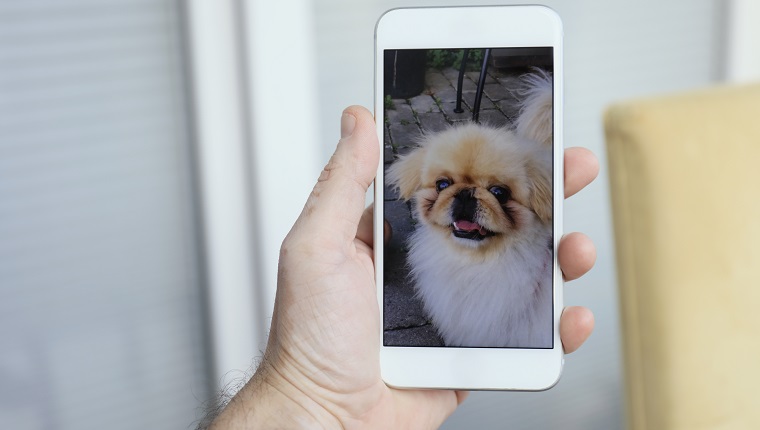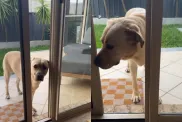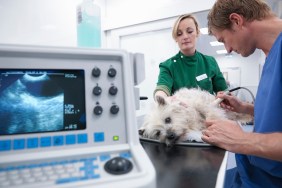Doctor Ilyena Hirskyi-Douglas, of the University of Glasgow, has conducted and authored a study that advocates for canine choice. By masterminding something called a DogPhone, she hopes to have taken a first step towards alleviating separation anxiety, and more.
Essentially, the DogPhone is a hi-tech toy — a large ball, to be exact. The pup interacts with it when they miss their parent or loved one, and the toy makes a call for the dog.
According to The Guardian‘s report, Hirskyi-Douglas hopes dogs will even use it, eventually, to call other dogs.
But Really — A DogPhone?
Can you hold on just a moment? The Dogphone is ringing. https://t.co/dlY5dkcO1E
— Stacey Burns (@WentRogue) November 20, 2021
It does seem like something out of an episode of Black Mirror, doesn’t it? We assure you, it does seem far more well-intended than you might think.
When a dog moves the ball of the DogPhone, it sends a signal to a nearby laptop, which then launches a video call to the dog’s parent.
From there, the parent receiving the call can choose to take the call, or not. And, in the reverse, the parent can call their pup. Same as on the parent’s end, the dog can choose whether to take the call or not. If they want to, they interact with the toy.
The overall invention of the DogPhone is meant to infuse a sense of personal agency within our pups — something that, thus far, has been strictly reserved for their human companions.
Okay, But Why?
(Stock Picture Credit: tolgart/Getty Images)As Hirskyi-Douglas puts it, “giving animals choice and control had been shown to improve their welfare and wellbeing.” That makes some sense if you think about it. Our canine companions are not all that dissimilar from us, psychologically.
How often do our own welfare and wellbeing thrive when we’re stripped of our agency?
“All this [existing] technology allows you to measure your pets’ steps or ring your pets or remotely give your dog food, but your dog doesn’t really have any choices,” says Hirskyj-Douglas.
This study merely asks for that to be thoughtfully considered and explored. Because “we can,” says Hirskyi-Douglas. “There’s so many different possibilities that you could have.”
How The DogPhone Study Was Conducted
Research for this study, which can be read in the Proceedings of the Association for Computing Machinery on Computer-Human Interaction journal, details the process.
Over 16 days, Hirskyi-Douglas and her nine-year-old Black Labrador, Zack, conducted a series of tests. These tests aimed to find the right level of sensitivity for the ball and to observe Zack’s understanding of interacting with it.
There’s a diary that details the calls between Hirskyi-Douglas and Zack, and what came of them. For the most part, and unsurprisingly, calls were made by accident.
“Dog rang me but was not interested in our call instead was checking for things in his bed,” one such diary entry indicates. However, Hirskyi-Douglas does venture to ask if these only seem like accidents from a human perspective.
After all, if a dog couldn’t find something, they might want to ask their parent where it is. This is where the potential for further testing lies for Hirskyi-Douglas. To her, these are questions worth further exploration.
“It’s just giving dogs a choice,” she says. “We may not understand the choice that they’re making. But that doesn’t mean they shouldn’t have a choice.”
In the meantime, you can take steps to better your communication with your dog, whether they call you or not. DogTime has a guide to real world examples of dog body language here!
Do you think that these kinds of questions should be explored? Do you think the DogPhone is providing an adequate means for exploring them? Let us know in the comments below.









